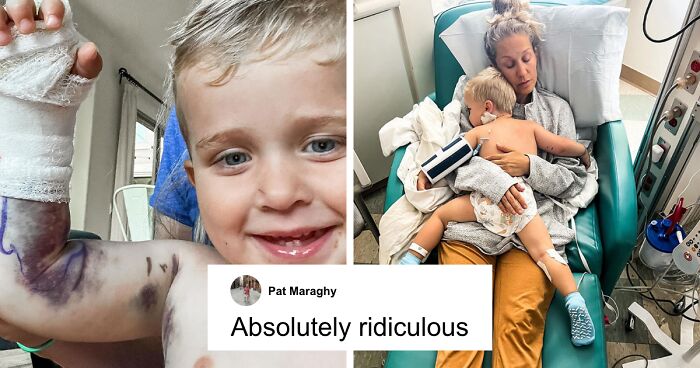
“That’s Outrageous!”: Parents Of 2YO Bitten By Rattlesnake Charged $300k For Life-Saving Cure
Interview With ExpertA California family was charged nearly $300,000 in medical bills after their two-year-old son was bitten by a rattlesnake.
Brigland Pfeffer was playing with his siblings in the backyard of his San Diego home, just a few feet away from his mother, when he made a loud noise.
“I thought he was going to die. We all thought he was going to die,” Brigland’s mother, Lindsay Pfeffer, toldCBS8.
- A family from San Diego, California, was charged $297k after their 2-year-old was bitten by rattlesnake in his backyard.
- The antivenom used on the boy reportedly accounted for $213,278.80 of the total medical bill.
- Brigland Pfeffer's hand has since healed but nerve damage and scar tissue have left his right thumb much weaker.
After calling 911, an ambulance took them to Palomar Medical Center Escondido, the closest medical facility that carried antivenom, located 25 minutes away from their home.
A family in San Diego was charged $297,461 in medical bills after their two-year-old boy, Brigland Pfeffer, was bitten by a rattlesnake in his backyard
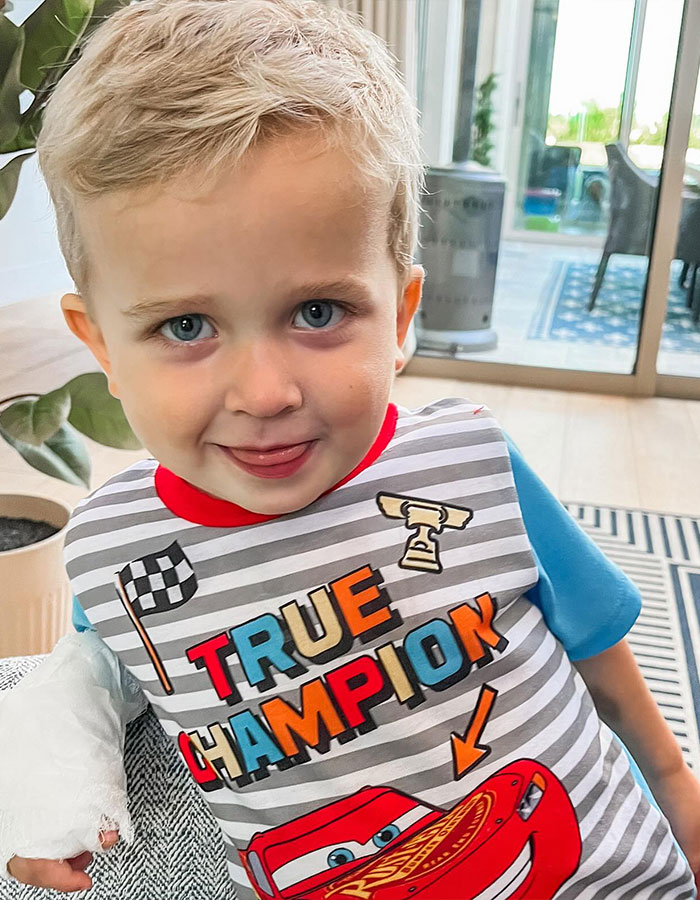
Image credits: dr.lindsay.pfeffer
The poison moved quickly through Brigland’s body. By the time they reached thehospital, the toddler’s hand was swollen and purple.
Unable to start an IV (intravenous therapy), themedical staff administered the antivenom using a procedure called intraosseous vascular access, which delivers medicine into the bone marrow cavity.
The boy was then transferred to the pediatric intensive care unit at Rady Children’s Hospital, the largest children’s hospital on the West Coast, where he received more antivenom. In the end, it took 30 vials of antivenom to treat him.
Image credits: dr.lindsay.pfeffer
“Nobody understands how he’s alive. This is unheard of why he actually made it,” Pfeffer said. “Because he’s 2, he’s more likely to die, but because he’s 2, he’s more likely to heal. But you have to survive to get there.”
The Pfeffers were charged a total of $297,461 for the treatment, which included two ambulance rides, an emergency room visit, and a couple of days in pediatric intensive care, according toKFF Health News.
Anavip, the antivenom used on the boy, accounts for $213,278.80 of the bill.
Lindsay Pfeffer, the boy’s mom, called 911 immediately after he heard his son scream and saw a rattlesnake, the largest venomous snake in the US
View this post on Instagram
Image credits: dr.lindsay.pfeffer
Brigland’s family was charged two different prices for Anavip at the healthcare facilities.
Palomar Medical Center—the firsthospital the boy visited—charged $9,574.60 per vial, for a total of $95,746 for the first 10 doses of the antivenom.
Then, Rady Children’s Hospital charged $5,876.64 for each vial, totaling $117,532.80 for the 20 vials Brigland received there.
Medicare—the US government program for those with limited income and resources—pays about $2,000 for a vial of Anavip, which is the price hospitals pay for the antivenom, according to Stacie Dusetzina, a professor of health policy at Vanderbilt University Medical Center.
“Nobody understands how he’s alive. This is unheard of why he actually made it,” Lindsay said
Image credits: dr.lindsay.pfeffer
Leslie Boyer, a doctor and toxicology researcher, broke down the cost of antivenom in a 2015 editorial published in theAmerican Journal of Medicine.
Boyer’s study reveals that the hefty price of antivenom in the US is not due to high manufacturing costs or the cost of the drug itself; instead, it appears to be the result of hospitals marking the product up to cover operational expenses and increase profits.
Gathering data from factory supervisors, animal managers, hospital pharmacists, and other sources, the doctor estimated the cost of a hypothetical antivenom at $14,624 per vial. (On average, a patient requires 18 vials to treat a snakebite, as per KFF Health News.)
Where does this figure come from? According to Boyer, the venom itself accounts for only 2 cents of the total. Manufacturing costs $9, and clinical trials account for $300 per vial.
But $10,250—over 70% of thetotal price—is attributable to hospital charges.
Image credits: dr.lindsay.pfeffer
“By far the greatest contributor to final patient billing was the portion of hospital charges later discounted for contracted payers, a negotiated amount that varied widely among hospitals but that does not represent actual collections for the majority of patients,” the doctor wrote.
“This analysis demonstrates that well more than half of the astonishing hospital charges reported in the lay media are not true costs at all, but are instead attributable to the idiosyncrasies of the US healthcare finance system.”
Moreover, there are only two big manufacturers in the antivenom market (Anavip and CroFab), which also explains the sky-high cost of the drug. In the US, even when the FDA approves a cheaper copycat drug, manufacturers can manipulate the patent process to keep competitors out by claiming ownership of certain product information, as per KFF Health News.
When Anavip entered the market, they were sued for patent infringement by CroFab’s maker. The case was settled in 2014, with Anavip promising to pay BTG royalties on its sales of antivenom until 2028. As a result, the manufacturer raised their prices to cover the millions of dollars in legal costs, Boyer said.
Anavip, the antivenom used on the boy, accounts for $213,278.80 of the total medical bill
View this post on Instagram
Robin Feldman, a professor at UC Hastings College of the Law in San Francisco who specializes in pharmacy law, explained that the American drug pricing system is governed by “perverse incentives.”
“When a child is bitten by a snake, the family shouldn’t be bitten again by the healthcare system,” the author of Drugs, Money, & Secret Handshakes: The Unstoppable Growth of Prescription Drug Prices told Bored Panda via email.
“All the parties benefit when the price rises. Hospitals and private insurance plans can mark up the prices to cover their many costs; middle players—who should be negotiating for lower prices—actually pocket more when the prices rise; and, of course, pharmaceutical companies make more when they can raise the prices, even after accounting for what the other players take out of the system.
“Patents and non-patent exclusivities (such as Orphan Drug Designation) help pharmaceutical companies extend protection of their drugs, a practice some call ‘life-cycle management’ and others call ‘evergreening.'”
Pharmaceutical companies may offer coupon programs for those who can’t afford a certain drug. However, Feldman points out that this is not a solution for emergency medications, as patients need treatment immediately.
“Companies can try to bargain with the hospital. Often, the hospital or others will negotiate. But families should beware. Aggressive hospitals or billers can dispatch aggressive debt collection agencies that can hound the family and ruin their credit.”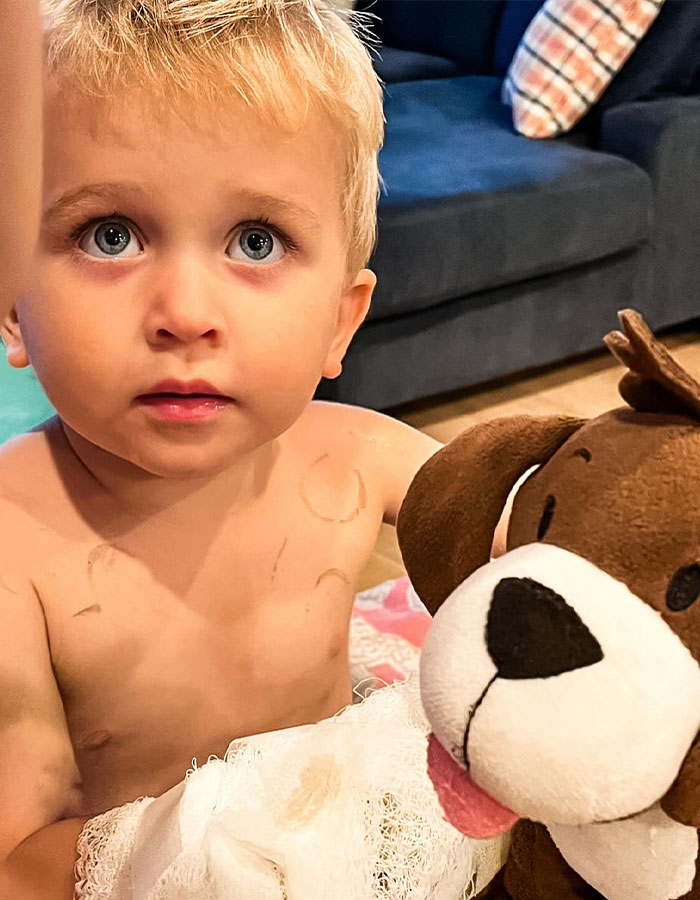
Image credits: dr.lindsay.pfeffer
Some facilities provide care even if patients don’t have insurance, added Dr. Kenneth H. Schell, a pharmacy regulatory and compliance consultant and professor of Pharmacy Law and Ethics. In these cases, the cost is arranged between the healthcare facility and the patient.
“There are manufacturer programs and other methods to help the patient pay. In addition, if the patient meets certain criteria, State Medicaid programs can be employed,” Dr. Schell told Bored Panda.
“As a last resort, a facility may have a program for those who cannot pay. This ultimately results in the facility writing off the non-payment as bad debt. This results in some tax relief, but financially, this is not the best long term strategy for dealing with this issue.”
Approximately 8,000 people in the US are bitten by venomous snakes each year, as per the Centers for Disease Control and Prevention (CDC). About five of those people die.
Nerve damage and scar tissue have left Brigland’s right thumb much weaker, and he is now left-handed
Image credits: dr.lindsay.pfeffer
For those bitten by rattlesnakes, 10–44% will have lasting injuries; they may lose all or part of a finger or lose the ability to use it. Rattlesnakes, the largest venomoussnakes in the US, can be found across the country sunning near logs, boulders, or open areas, and do not always rattle before biting, the CDC notes.
As not all emergency rooms carry antivenom, it’s recommended to go to a large hospital. Depending on the severity of the bite, initialtreatment may begin at an urgent care facility while arrangements are made for transfer to a hospital equipped to handlesnake bites.
Since being bitten in May, Brigland’s hand has healed, though nerve damage and scar tissue have left his right thumb much weaker. His family has installedsnake fencing around their yard.
Ultimately, Sharp Health Plan, the insurer covering thetoddler, negotiated down the charges for his treatment, and the family paid $7,200. However, this summer, Pfeffer received a letter indicating the family owes an additional $11,300 for one of the ambulance transports.
Bored Panda has contacted Linsday Pfeffer for comment.
“We deserve and desperately need universal healthcare,” one reader exclaimed
Explore more of these tags
We need government leaders who will actually do something about such absurd costs for necessary medical care and d***s. Too many higher-ups making enormous incomes, too many things costing way too much money.
And yanks STILL believe they have a "better health care system", that "socialized medicine will kill people with waiting lists and rationed care". Rationed 'care' and HMOs are what killed Nataline Sarkisyan. Or should I say, murdered her. [ https://abcnews.go.com/GMA/CancerPreventionAndTreatment/ ]
In New Mexico some rural medical facilities are refusing to give cancer patients their next dose of chemotherapy unless the patient can pay off their last round of chemotherapy. A lot of the patients are elderly, and despite being on Medicare, they're still receiving bills of $15k for their treatment (i thought Medicare for old people meant they pay nothing, NOPE!). Some of them have had to start making the journey all the way to Albuquerque to find a facility that won't turn them away from the next stage of their treatment because they still have medical debt. My 76yr old roommate is lucky we live in the city, he's on Medicare and still has over $20k in medical debt from his prostate cancer treatment and wasn't refused for treatment due to the debt (in remission, he's doing good!). This is not a 'healthcare system', it's a racket that your life depends on.
Load More Replies...My wifes 1.5 hour knee surgery was $160,000. She didn't even stay the entire day in the hospital. Her blood draw 3 weeks ago was $1,800. Talk about getting out of hand.
The medical establishment will make sure Americans never see Universal Healthcare. CEO's make too much money now the way it is.
Load More Replies...We need government leaders who will actually do something about such absurd costs for necessary medical care and d***s. Too many higher-ups making enormous incomes, too many things costing way too much money.
And yanks STILL believe they have a "better health care system", that "socialized medicine will kill people with waiting lists and rationed care". Rationed 'care' and HMOs are what killed Nataline Sarkisyan. Or should I say, murdered her. [ https://abcnews.go.com/GMA/CancerPreventionAndTreatment/ ]
In New Mexico some rural medical facilities are refusing to give cancer patients their next dose of chemotherapy unless the patient can pay off their last round of chemotherapy. A lot of the patients are elderly, and despite being on Medicare, they're still receiving bills of $15k for their treatment (i thought Medicare for old people meant they pay nothing, NOPE!). Some of them have had to start making the journey all the way to Albuquerque to find a facility that won't turn them away from the next stage of their treatment because they still have medical debt. My 76yr old roommate is lucky we live in the city, he's on Medicare and still has over $20k in medical debt from his prostate cancer treatment and wasn't refused for treatment due to the debt (in remission, he's doing good!). This is not a 'healthcare system', it's a racket that your life depends on.
Load More Replies...My wifes 1.5 hour knee surgery was $160,000. She didn't even stay the entire day in the hospital. Her blood draw 3 weeks ago was $1,800. Talk about getting out of hand.
The medical establishment will make sure Americans never see Universal Healthcare. CEO's make too much money now the way it is.
Load More Replies...
 Dark Mode
Dark Mode 

 No fees, cancel anytime
No fees, cancel anytime 






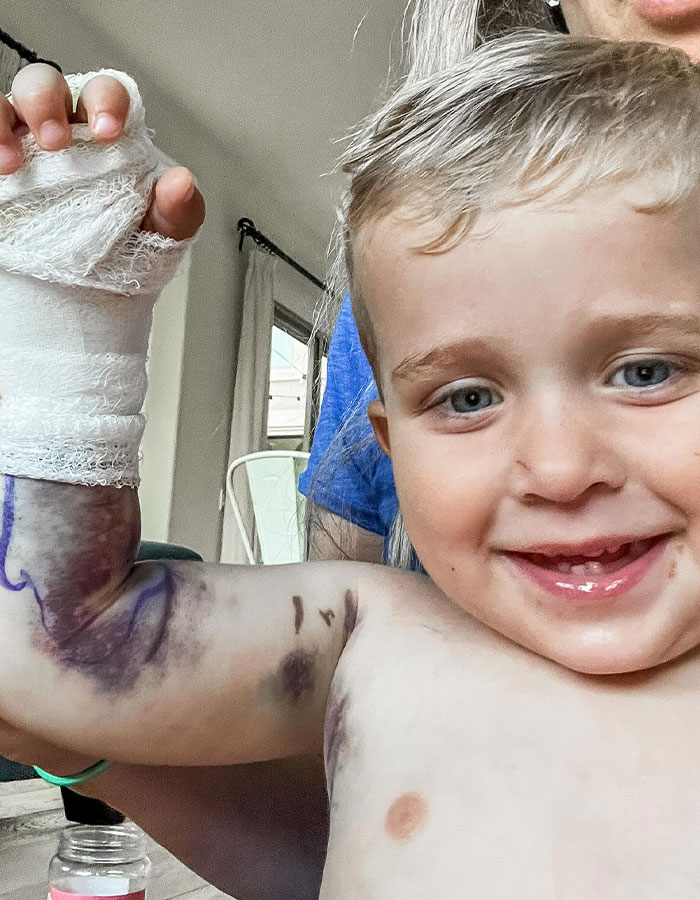
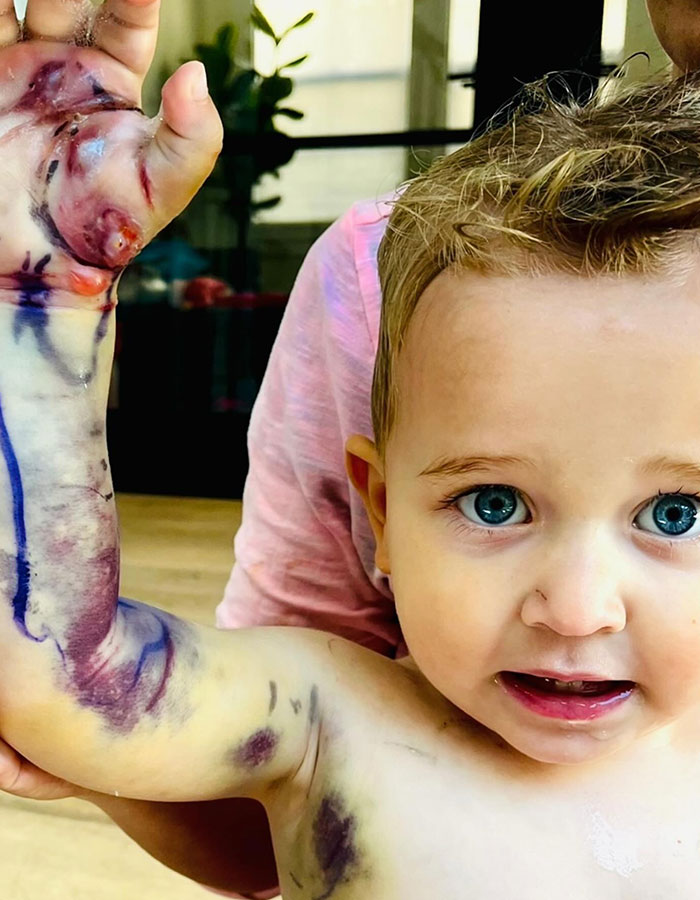
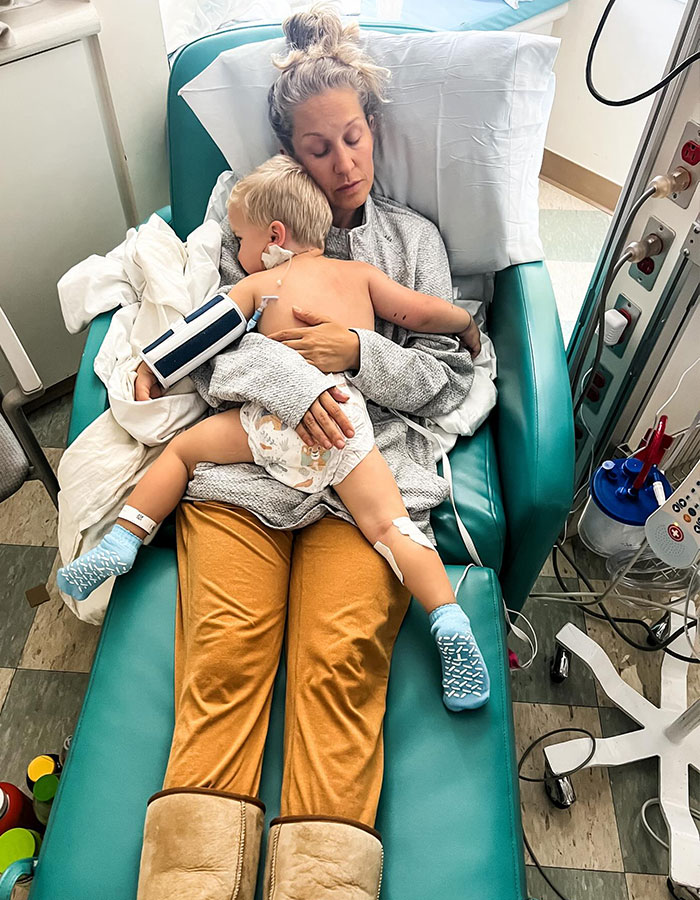
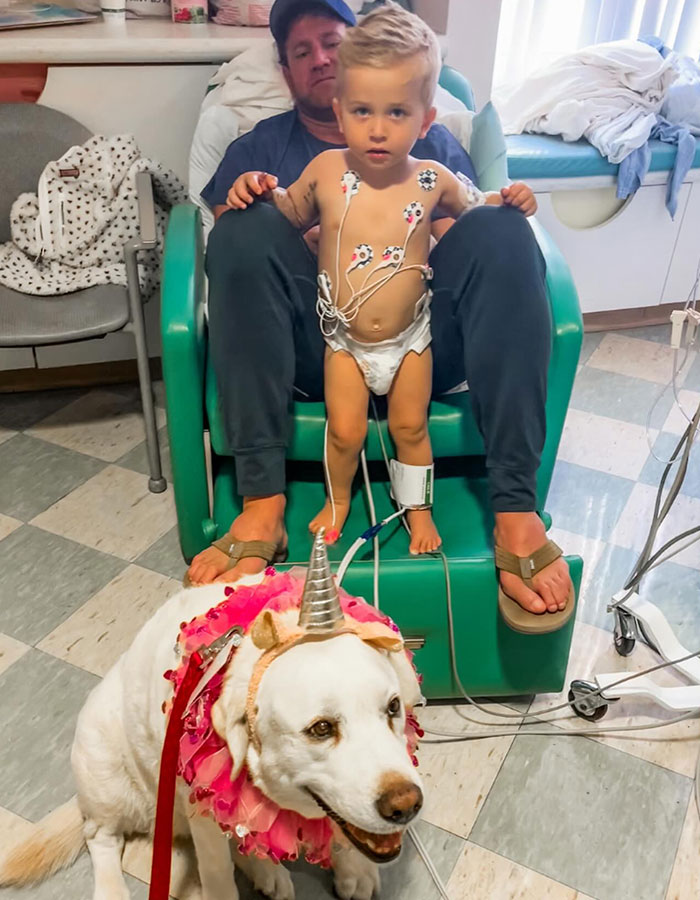
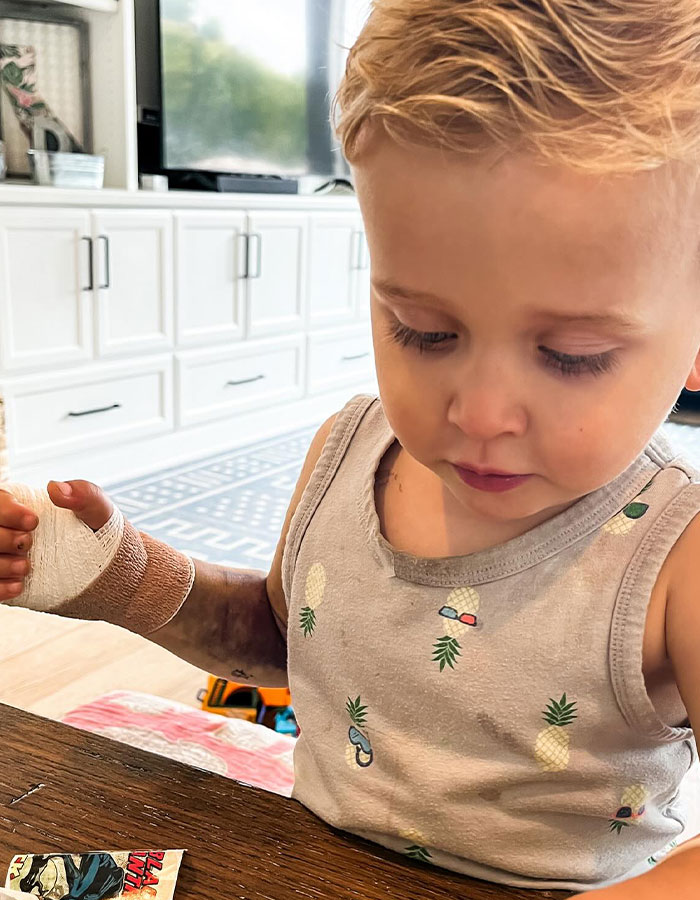





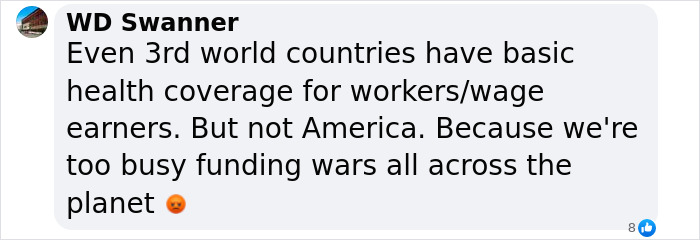














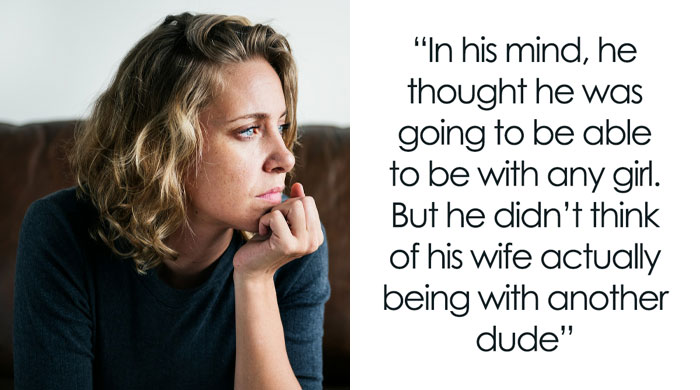




























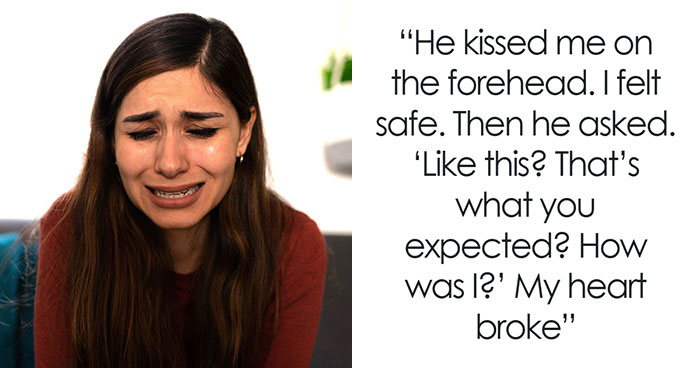

29
40